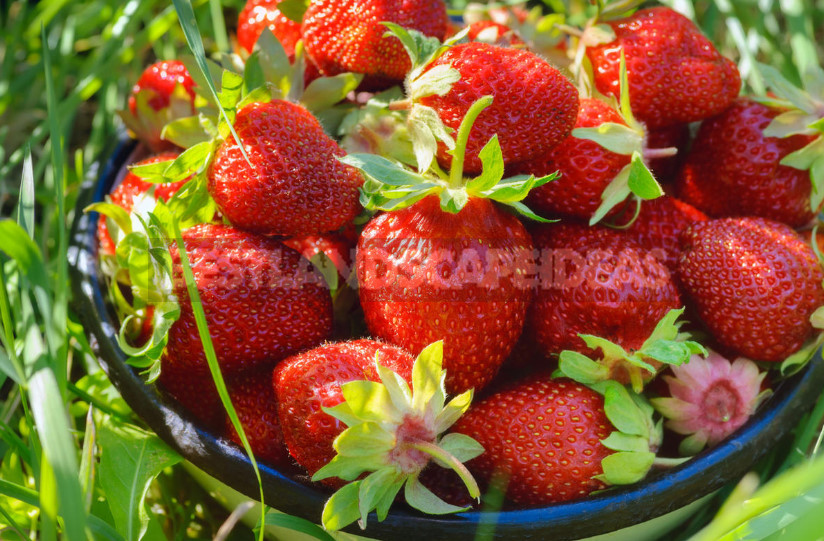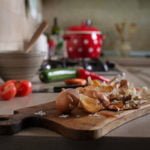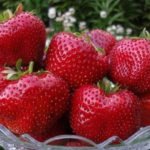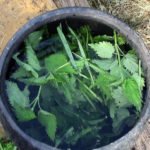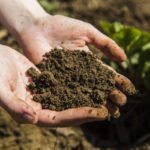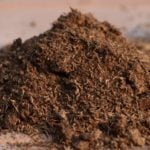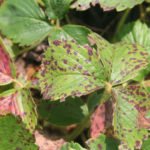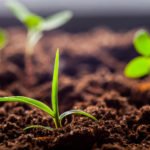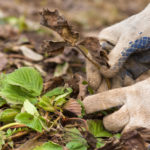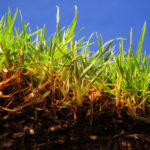Hardly any other berry culture can compete with strawberries in its popularity. Sweet fragrant berries – a welcome treat for each of us. The beauty of them is that they begin to ask for the table in early summer, when most other garden crops only “swing” and tie their fruits.
During each summer season strawberry Bush goes through several important stages of development. In our hands to send the plant in the right direction: to stop at the root of all leprosy and pranks and get to do business – active fruiting. Here as with a small child: encourage candy for good behavior. Only in our case, the sweetness is replaced by feeding and give it in advance – shortly before the expected “correct behavior”.
It is necessary to say at once that we will not take into account the filling of the soil with nutrients during the planting of strawberries (the ideal time for this is the end of July and the beginning of August), but only remember the importance of such agrotechnical reception. Adding a sufficient amount of fertilizer to the soil (in a bucket of humus, 2 tablespoons of superphosphate, 1 tablespoon of potassium sulfate and 1-2 cups of ash per m²) will not only guarantee an active start of young animals, but also save the gardener from unnecessary trouble in the next season – the outlet of the first year of life can not be fed.
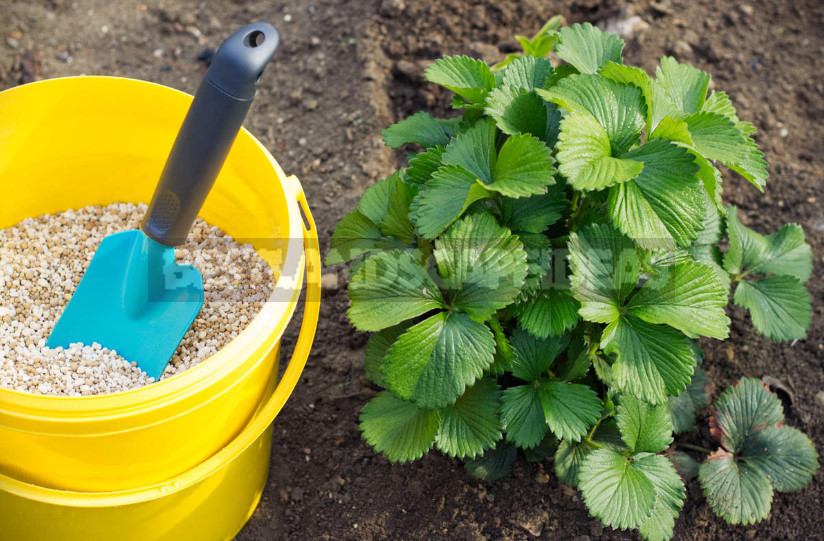
Further discussion will lead to 2-4-year-old plants that have entered the time of active fruiting. Such workers to maintain vitality need to provide a “buffet” — to spend at least 5 different feedings per season, which should include “high-calorie” organic matter, macro-and trace elements.
The first feeding
Strawberry bushes, exhausted by the winter cold, in early spring (immediately after the snow melts) need help to regain strength. At this time, the most important “vitamin”, which will strengthen the strength of plants and help them to actively move into growth, will be nitrogen. But before you treat strawberries such yummy, do not forget to clean the bed and remove from it all last year’s plant residues.
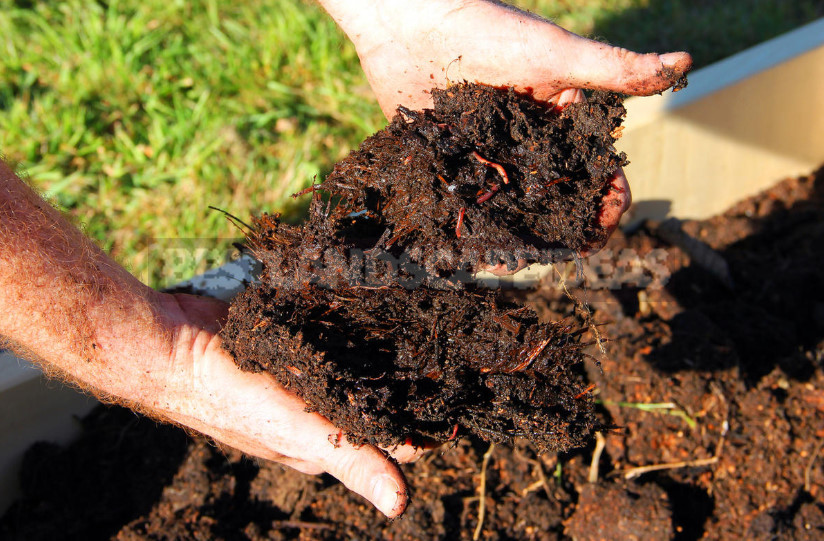
As n treats ideal solution mullein. It is easy to prepare it if there is rotted manure of cattle at hand. Take a couple of kilograms of natural products, pour 10 liters of water, mix thoroughly and carry out feeding – pour 1 liter of solution under each Bush.
An alternative to the solution of mullein can be a nutrient mixture based on bird droppings. Dilute the dry litter with water in a ratio of 1:1 and allow to infuse for 7-10 days in a warm place. After that, in 15 liters of water, pour 1 liter of infusion and fertilize the planting according to the same scheme – 1 liter per plant, trying not to wet the leaves with such a drug.
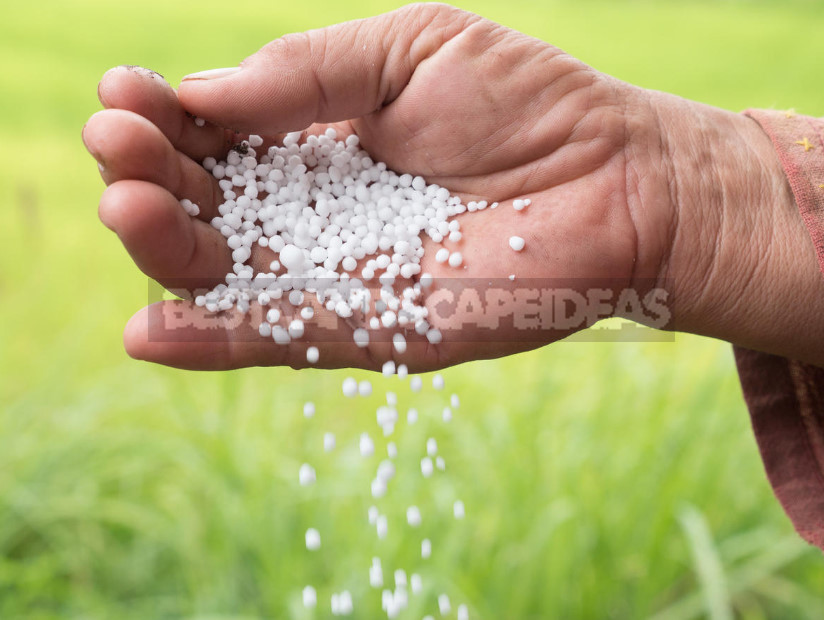
Some gardeners do not have the opportunity to get hold of such natural fertilizers, so they can go to the store and buy a package of urea – it’s the same nitrogen, but already of chemical origin in a convenient granulated form. In the case of urea need to dilute 10 liters of water 2 tablespoons of granules and pour under each strawberry Bush 0.5 liters of this nutrient solution.
The second feeding
Having got stronger and having increased magnificent leaf sockets, strawberry bushes in some weeks enter the next life cycle – begin to form buds, spending for this responsible procedure quite a lot of forces. Since the number of ovaries depends on the number of blossoming flowers, “cheer” strawberries during budding complex of macronutrients, focusing on potassium.
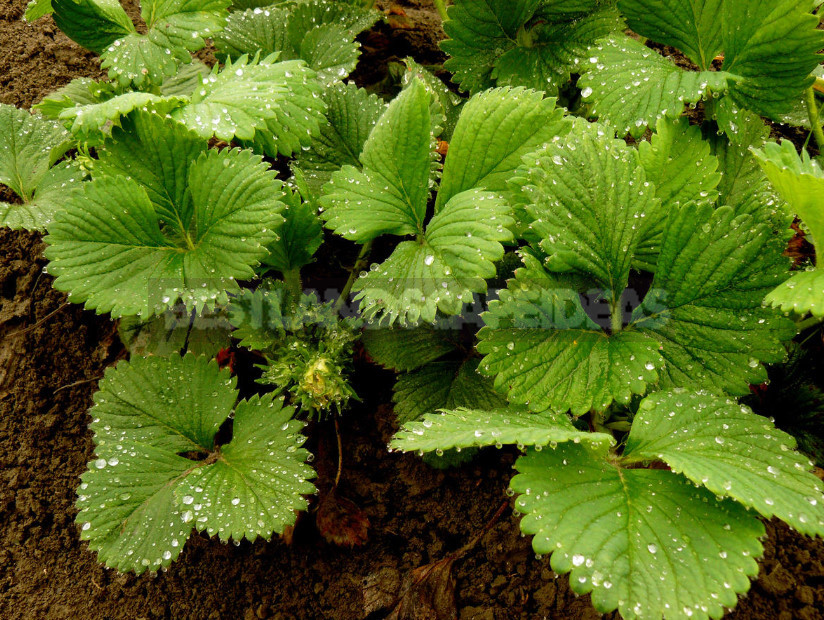
For this purpose you can use any complete fertilizer, e.g. NPK, and add to it one-component product based on potassium, for example, potassium salt. For the preparation of nutrient solution required to dissolve in 10 l of water 2 tbsp. spoons of NPK and 1 tablespoon of the potassium salt and pour for each plant in 0,5 l of the mixture.
The third feeding
Pushing strawberries second feeding on lush flowering, preparing a new “candy” — feeding, which will help to get out of each Bud bloomed ovary. Here, first of all, it is worth remembering about such an element as boron, which increases the number of ovaries and reduces the amount of void.
For this purpose, we buy a bag of boric acid in a pharmacy or a horticultural store and prepare a solution for foliar spraying on the basis of this product – for 10 liters of water 2 g of powder (at the tip of the knife). Since boric acid is poorly soluble in cold water, first dilute the powder in a glass of hot water, and then the resulting mixture is poured into a bucket of cold water.
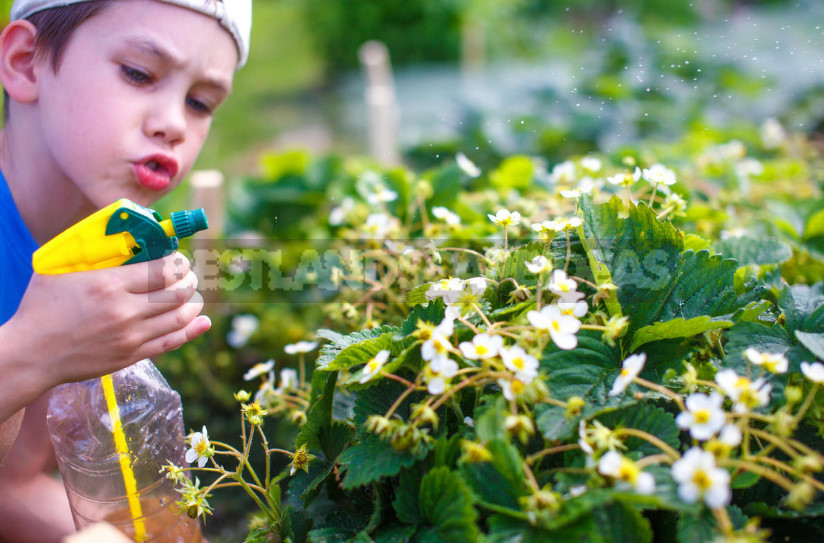
The effect will be much better if instead of a solution of boric acid you treat strawberries on a sheet of liquid fertilizer containing a complex of trace elements.
The fourth feeding
Half the work is done – we made strawberries tie a large number of fruits. Now it remains to preserve the formed ovary and help it turn into large juicy and sweet berries. To this end, we prepare a combined feeding, which should be as “high-calorie”, because the plant in this difficult period spends a huge amount of energy and especially needs a full diet.
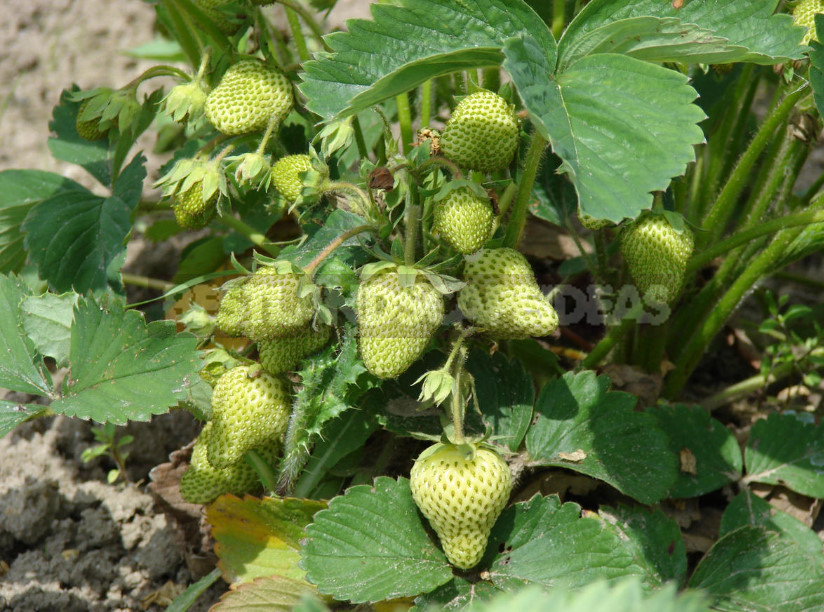
According to the above recipe, prepare a solution of mullein, add a glass of sifted ash to 10 liters of such a nutrient mixture and give it a day to infuse. Then in this nourishing cocktail dissolve 1 tablespoon full of mineral product (for example, the same NPK) and insertion under every Bush of 1 l of the resulting solution.
If there was no mullein and ash in the country farm, we replace them with a universal organomineral drug containing humic compounds and macronutrients.
Fifth feeding
After gathering a generous harvest of berries, early to rest on their laurels – you do not want to stay with the nose next season? To help the plants to restore the forces spent during the fruiting period, to lay numerous flower buds of the next season and properly prepare for the upcoming winter, we carry out the last feeding this year. This procedure should be carried out a couple of weeks after the collection of the last berries, but not later than the beginning of August, because it is in August strawberry lays flower buds, which in the new season will turn into berries.
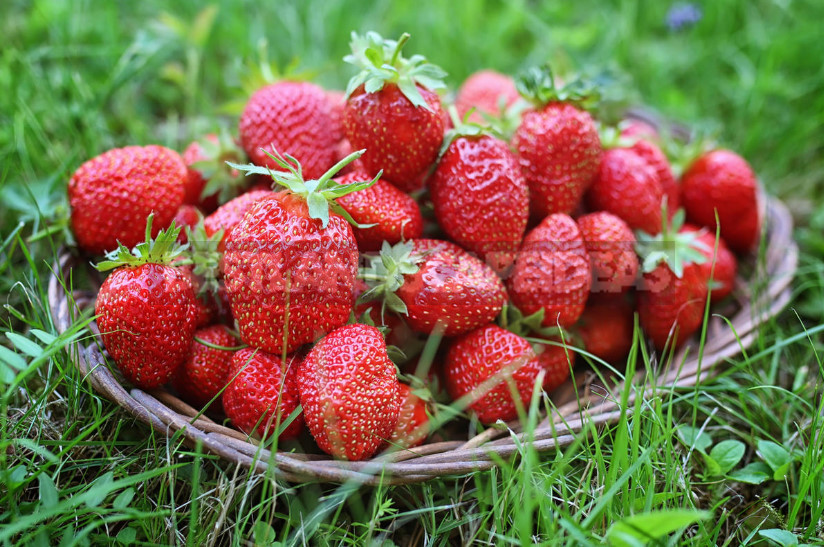
To this end, in the aisles of strawberries are made in dry form or monocomponent phosphorus and potassium preparations according to the instructions, or replace them with a complex drug. An excellent option is a balanced “autumn” fertilizer, which contains a minimum amount of nitrogen and increased doses of phosphorus and potassium.
Instead of “chemistry” for strawberries, you can make the sifted ashes from the calculation of 4-5 cups per 1 m² of the ground. Fertilizer is carefully sealed to the soil using hand hoes, and then liberally pour the strawberry plantation. After that, it is necessary to mulch the soil surface on the bed with ripened humus or compost layer 2-3 cm, paying special attention to the bushes with excessively bare hearts.
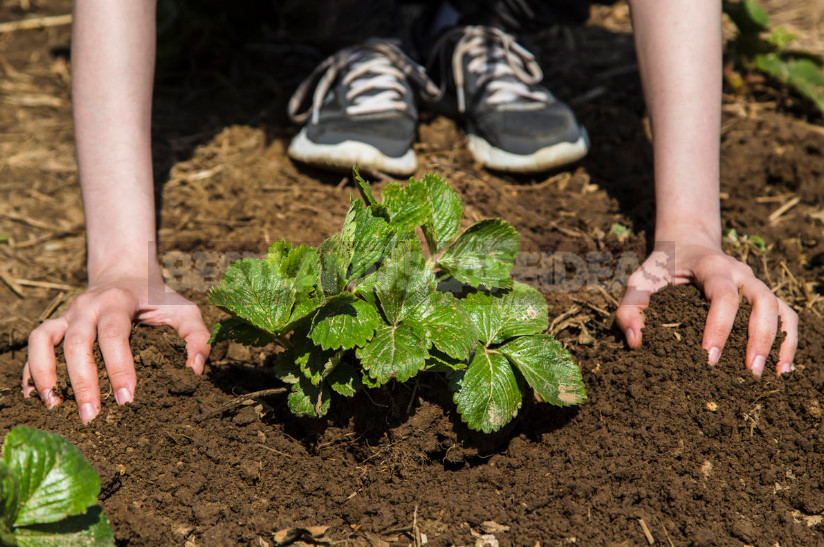
If you methodically follow the above recommendations and keep strawberries on such a hearty allowance, a rich harvest will not keep you waiting. Just do not forget that even with the right diet, this culture, entering the Mature four-year age, begins to lose ground and gradually loses its former yield. So do not be lazy to regularly update the plantation, because now, having at hand a ready menu for plants, take care of them will be much easier.
Dear readers, what do you treat your strawberries to during the season? Share with us in the comments of the recipes of fertilizing, which help to achieve from this culture a generous harvest.
